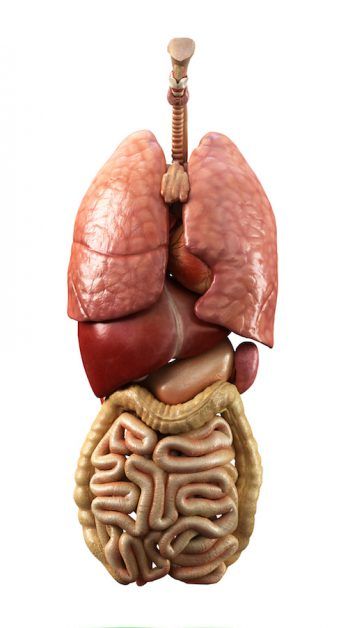Dairy
The necessity of dairy to a diet is a controversial topic. While dairy is not an essential diet component it can be a good source of nutrition for many. For instance dairy can be an excellent source of calcium, vitamins D, E, A, B complex vitamins, folic acid, phosphorus, potassium and magnesium23. Cow’s milk contains casein, which is a protein that is easily absorbed and important for soreness prevention and muscle growth(23). Casein, however, can have “autoimmune-stimulating properties and can initiate very serious allergic reactions in some people particularly those who have experienced “leaky gut” syndrome as a result of a concurrent intolerance to grains”(8).
Some downsides to dairy include emulsifiers in processed cheese. These emulsifiers are used to increase the spreadability of cheese when it melts and can have adverse health risks(10). Lastly dairy is relatively low glycemic but stimulates insulin; for those looking to lose belly fat, dairy can prove to be a hindrance.
Cortisol and its link to the ingestion of high amounts of carbohydrates
Cortisol is a hormone in our bodies produced by the adrenal gland that is released into the bloodstream during times of stress. Cortisol is important in energy production as it can produce glucose from muscle tissue during these times8. Changes in your body such as increased heart rate, respiration and blood circulation can all occur during high cortisol release(8).
When we eat lots of carbohydrates, our bodies begin to release insulin and our blood sugar decreases, sometimes to the point that your brain begins to think that it is low on fuel (the typical “post-lunch afternoon blues” are explained by this)(8). Our bodies see this as a stressful event and the adrenal glands begin to produce cortisol and release it into the bloodstream(8). Cortisol in turn breaks down muscle tissue into amino acids which are then converted by the liver into glucose, giving your brain the energy it thought it needed(8).
This creates a stress response cycle, and the pancreas, which produces insulin, and the adrenal glands can be burned out from this cycle which can lead to “elevated risk of disease and dysfunction”(8). Furthermore, a life of constant stress compounded by lack of sleep may result in constant cortisol production and this can suppress our immune system and lead to diseases such as osteoporosis, since cortisol is able to reduce the amount of calcium absorbed by bones(8). There is a common appearance in those afflicted with consistently increased levels of cortisol. This is termed a Cushingoid appearance. It consists of fat padding at the posterior neck, termed a "buffalo hump," moon facies, abdominal striae, and truncal obesity.
Wheat and the Hybridization of Grain
As the human population continues to increase worldwide, so has food consumption. Due to this, humans have tried to accommodate by coming up with ways that food can be grown/created with the highest yield possible. This is how the era of genetic modification and crossbreeding of different wheat and grass varieties was born.
“Hybridization efforts involve techniques such as introgression and “back-crossing”, in which offspring of plant breeding are mated with their parents or with different strains of wheat or even other grasses. By 1980, these efforts had produced thousands of new strains of wheat, the most high-yielding of which have since been adopted worldwide”(10). Furthermore, there has been increased interest in the safety of this type of crop genetic modification, which has caused agencies such as the FDA to “require testing prior to a genetically modified product’s release into the market”(10).
Glycemic Index
Glycemic Index (GI) is a way to categorize the carbohydrates in foods according to the effect they have on the body’s blood sugar once consumed11. The higher the Index is, the higher one's blood sugar will elevate. Given that sugar is eventually converted to fat, many diets focus on foods with a low glycemic index.
In patients with diabetes, it is important to keep track of the glycemic index by monitoring the quantity of carbohydrate consumed as it can help control blood sugar. “Foods ranked < 55 are considered to have a low GI. Low-GI foods include many fruits and vegetables, legumes, whole grains, and dairy products. Foods with a ranking between 56 and 75 are considered to have a moderate GI. High-GI foods, those with a ranking between 76 and 100, often include highly processed and refined carbohydrates such as instant oatmeal, white bread, and cornflakes”(12).
Disclaimer
The ideas, concepts and opinions expressed in this article are intended to be used for educational purposes only. The author and publisher of this article are not rendering medical advice of any kind, nor is this article intended to replace medical advice, nor to diagnose, prescribe or treat any disease, condition, illness or injury. It is important that before you begin any diet or exercise program that you receive full medical clearance by a licensed physician. Author and publisher claim no responsibility to any person or entity for any liability, loss or damage caused or alleged to be caused directly or indirectly as a result of the use, application or interpretation of the material in this article(8) (modified from The Primal Blueprint book).

